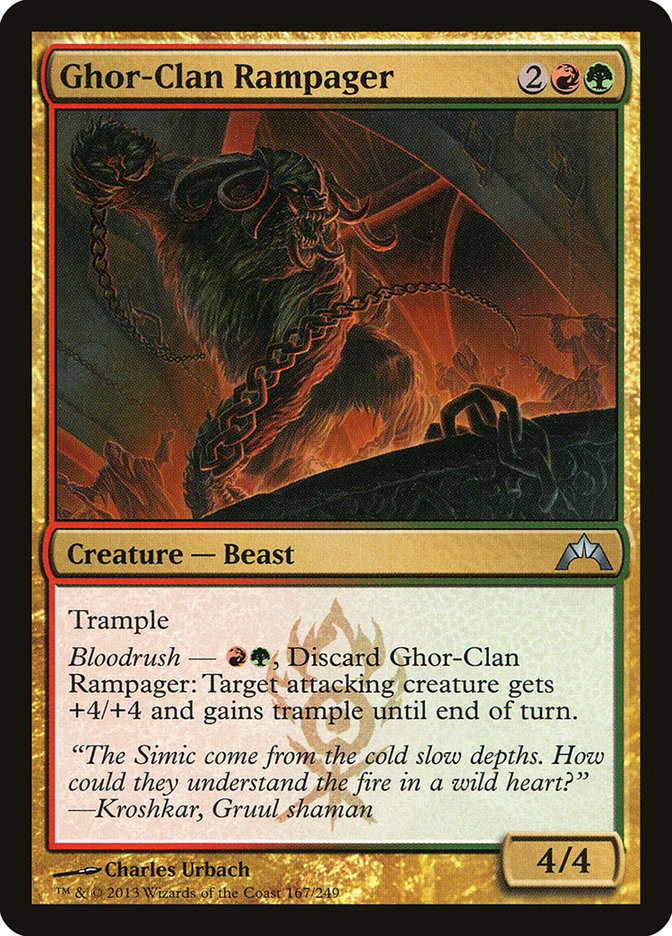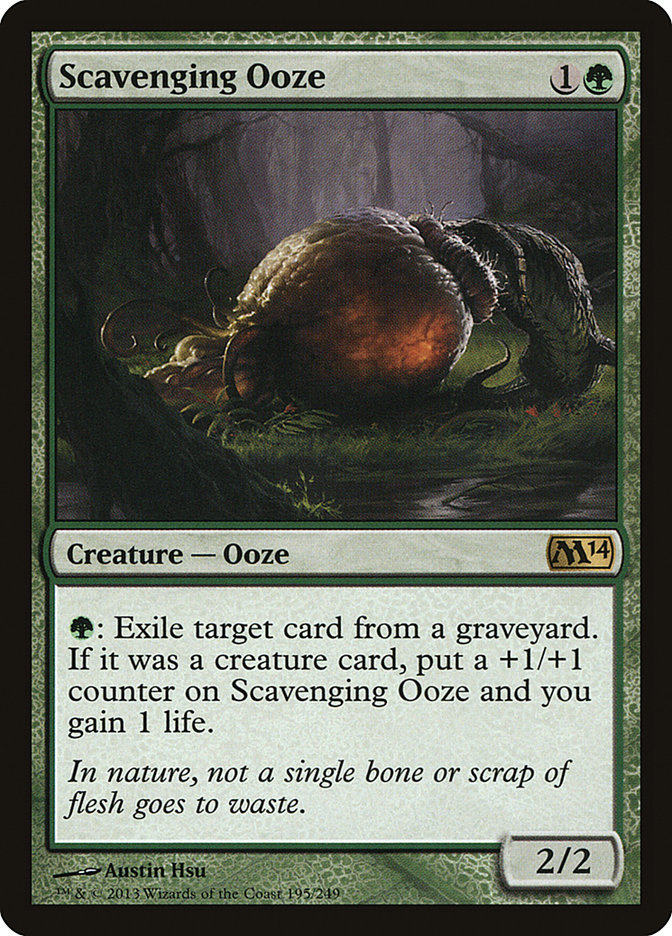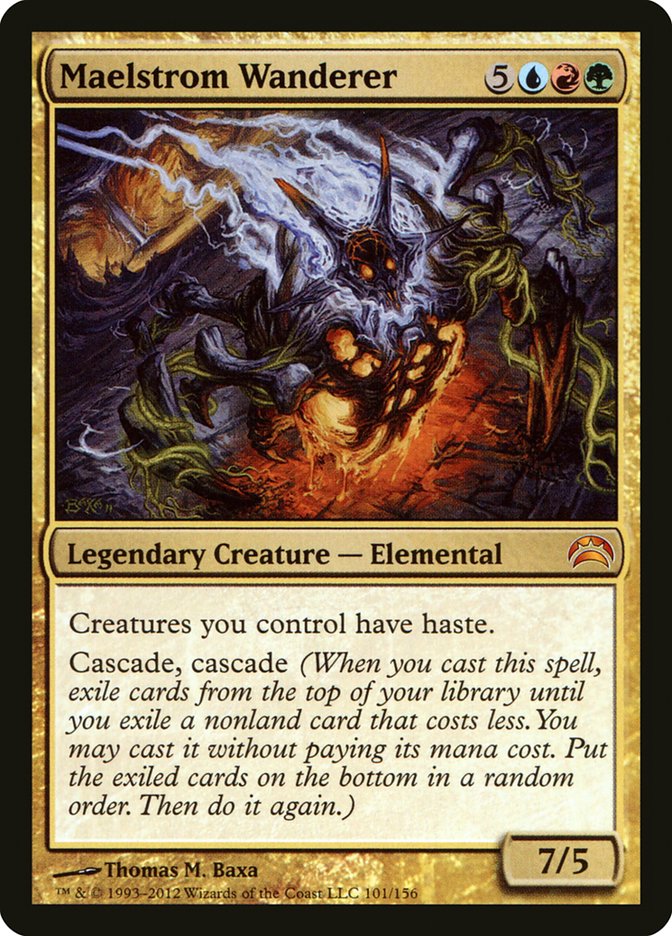As you may have noticed, I wasn’t in Providence.
After a win in Syracuse and losing in the finals the following weekend of States, I have been pretty happy with the G/R Dragons deck that I’ve been working
on, but sometimes other things take precedent.
I’m currently sitting in a hotel room in Spokane, Washington. There are pugs snoring as I blow my nose since I happened to come down with something the
previous night.
Nothing better than getting sick when you’re in the Middle of Nowhere, Montana, but that’s the price you pay for driving across the country.
Since I am still in the middle of trekking my way across America, I wanted to do something a little different this week. I will return to discussions of
the hottest tech once I’m finished traveling, but for now, I thought it might be fun to try and connect a bit with my readers and do a mailbag type
article.
I put the feelers out there on social media last week and got quite a few questions, so let’s dive right in!
Our first question is a pretty interesting subject.
“With Magic: the Gathering I see players excel in one deck type (aggro, combo, control) for most of their Magic career, but there are some who are
flexible and can play other deck types. Which is more effective when it comes to competitive play?”
This is something that you see quite a bit on the professional level but in a little different context. You find that most of the professional teams will
try to build around having people who excel in different categories. This helps to make sure that all of the angles are covered when it comes to
preparation for an event.
That being said, not everyone is on a professional team and has the luxury of leaning on each other. I think that understanding all Magic deck types is the
best way to go. Having a well-rounded suite of Magic skills can be very valuable, but it is important to note that as the game continues to evolve, the
lines between the classic deck archetypes blur more and more. Decks start to more and more become midrange, and being able to determine your role in a
given matchup becomes important.
Who’s The Beatdown
is something that plays a very key role in the current day and age of midrange decks trying to go over the top of each other. Of course, we still have our
Red Aggro decks and our U/X Control decks, but for the most part, we’ve been dealing with a midrange world in Standard for quite some time now.
Ultimately, I like playing and learning with every deck and deck type. That way, you are prepared to pick up and play something if/when it happens to be
the best deck for that particular event. This is one of the reasons Brad Nelson is so successful, especially in Standard events.
This person also added on a little fun question at the end of his submission.
“As a fan of Epic Rap Battles of History, who would you like to see battle next?”
I am definitely a fan of ERB, but I am also a pretty big classic Nintendo fan, so anything having to do with classic NES characters would be sweet. I
wasn’t too happy with the Mario Bros. vs the Wright Bros., so I’d love to see them do something cool with Link, Zelda, Samus, or any of the other classic
NES characters.
Next we have a question that hits close to home for myself.
“Effective sideboarding is one of the most often overlooked skills in Magic: the Gathering, and something I personally think I do incorrectly way too
often. What thought processes do you go through to arrive at a cohesive sideboarding plan in any particular matchup? Also, what is the importance of
diversification of sideboard answers and the redundancy of those answers?”
This is something that hits close to home, and I don’t really think that I came into my own until I started working on how to build an effective sideboard.
I even wrote an article about it here.
I went through this same process when I built my deck for the Open Series in Syracuse that I happened to win a few weeks back.
It’s very important to stop and look at the field for whatever format you’re going to be playing in as a whole. Once you have a grasp on the common/popular
decks that you may face, then you start to identify the potential sideboard cards that can be good against those decks. Once you have a list of potential
cards, then I like to identify just how many cards I want to take out against the popular decks.
With this information in hand, you can then build your sideboard. Taking into account any particular archetypes that you expect to be over or
underrepresented. An example of this was actually in Syracuse. I expected there to be an oversaturation of Mono-Red Aggro, G/R Aggro (similar to Ross
Merriam’s Season One Invitational list), and Abzan Control. I didn’t think that there would be very much U/B or Esper Dragons (unlike what happened at the
Pro Tour), so I wasn’t heavily prepared for those types of matchups. Now, however, things have changed and you have to adjust your plans accordingly.
I think that the reason I did so well during Season Two of 2014 with my different versions of Jund Monsters was because of how comfortable I was and how
well planned out my sideboarding was.
This also ties into the second part of the question. I do think that it’s important to have some diversification in your sideboard answers, but I think
that cards being flexible and applicable in multiple matchups is also important. It’s also important to take into account that sometimes narrow cards are
needed given how popular a matchup is. An example of this is the Plummet that I ran in my sideboard at States a few weekends back. The G/R Dragons mirror
is all about gaining an advantage with our 4/4 flyers, and having access to a two-mana removal spell to help with that was pretty important.
One last tip for building an effective sideboard is to always keep in mind what your opponent’s deck is going to look like after sideboard. We can’t just
sideboard against their game 1 deck, we have to be aware what tools they might have against us and how to counter those too.
Next I want to address something that I get asked quite a bit.
“I really want to make Magic my career. Should I move to Roanoke and get a job there, or what would you suggest I do?”
While Magic may be my career, I would say that being a professional player is a very small portion of that. Getting to the level where you can make a
living off just playing Magic is quite rare. It’s even rare to be in a position where you can do Magic content and play events and just support yourself
with that.
Personally, I have a normal 9-5 (well 10-6 since you know, we’re gamers) in house at SCG, and I love it. I love working with Magic cards, and as a company,
SCG is amazing and very supportive of the content I produce and the events that I try to play in.
Magic is great because it can be so many things to so many different people. If you already have a great job and get to spend your free time traveling and
playing Magic, that’s awesome. If you are a full-time student and go to FNM every week to hang out with your friends, that’s awesome too.
Really, all you have to do is just follow your heart and do what makes you happy.
Here’s an interesting question:
“If you could make any one card from Theros/Return to Ravnica Standard legal right now, what would it be and why?”
Well, this is an interesting question. There are so many amazing cards that I miss from Theros/Return to Ravnica Standard, but I think that it has
to break down into a handful of cards.
Stomping Grounds would be amazing. In testing already, there have been plenty of times that I’ve said I’d kill for a Karplusan Forest. Having another
untapped G/R dual land would be amazing. Not only would it smooth out casting cards like Ashcloud Phoenix alongside all of my green mana accelerants, but
it would make Haven of the Spirit Dragon a four-of.
As much as I would love to bring back a land, with all the amazing spell choices, I just can’t bring myself to it.
Scavenging Ooze is a potential card. Having access to a two-drop that isn’t a flop in the lategame was one of the reasons that Jund Monsters was able to be
successful. Protecting Domri Rade, gaining life, outpacing opposing creatures, or just simply attacking for two. Scavenging Ooze played a key role in
Standard during its time being legal, and I would love to see it come back.
The question is, would I rather have Scavenging Ooze or Ghor-Clan Rampager?
I honestly don’t know. I think that Rampager would fit perfectly in some of the aggressive decks right now and go a long way towards helping Goblin
Rabblemaster punch damage through in the mid/lategame.
I love them both so much, but I’d also like to have Mizzium Mortars. With how the current metagame is shaping up, how amazing would Mizzium Mortars be.
Revolving around four toughness creatures (Thunderbreak Regent, Stormbreath Dragon, Dragonlord Ojutai), I can say that I would love to have it back. It
would also help as a way to fight the mana in the green-based ramp mirrors.
All in all, I would chose Mizzium Mortars. An extremely close second place would be Domri Rade, and if I were to sit here and think about it anymore, I
imagine that I’d change my mind. With no more Mutavault or Lifebane Zombie to threaten it early, I think that Domri Rade would be pretty amazing in the
current Standard.
Can I just have two?
Lastly I want to look at a question I get quite a bit.
“If CVM were to make a Commander deck, what would it be?”
Well, I don’t really play Commander. The format is all about having fun, and I tend to get a bit too competitive. That kind of takes away the spirit of it
all, and I end up not having much fun.
I did build a Commander deck a long time ago though. Shortly after they unbanned Rofellos, Llanowar Emissary as a commander, I built him. Using the
infinite combos with Staff of Domination and Umbral Mantle, and mana denial from Acidic Slime, Plow Under, Woodfall Primus, Terastodon and the like, I made
plenty of Sharuum, the Hegemon players unhappy, but it just wasn’t really in the spirit of the game/format.
I can have all the fun in the world preventing my opponent from ever doing anything, but what fun are they having? And when the format that you’re playing
is all about each person’s individual interpretation of fun, I just kind of found myself not enjoying it.
I will, however, play other peoples’ Commander decks in fun games. As long as I’m not invested in the deck, then I can enjoy myself playing; especially
when you can sit down and battle without knowing any of the cards that are in the deck.
If I were to build one today here and now, it would probably be Maelstrom Wanderer. I enjoy ramping and doing things that those type of decks facilitate.
Plus, what’s better than cascading? Doing it a second time!
I would like to thank everyone who submitted their mailbag questions, and I apologize to anyone whose question didn’t get addressed here. There were a lot
of questions about how I would change the G/R Dragons deck after what happened at the Pro Tour, and that’s something that I will be looking to address in a
future article.
For now, I’m going to take some meds and try to get some sleep. Hopefully I can avoid waking up in pug drool this time.



